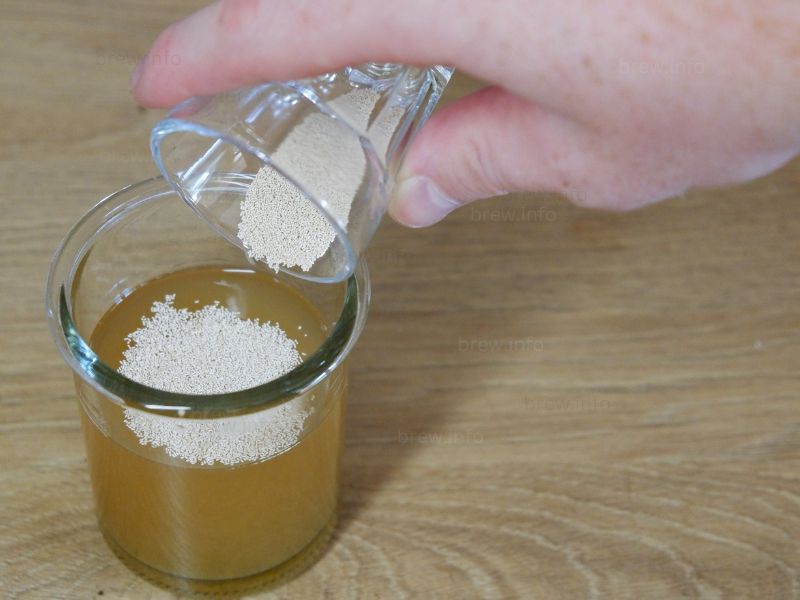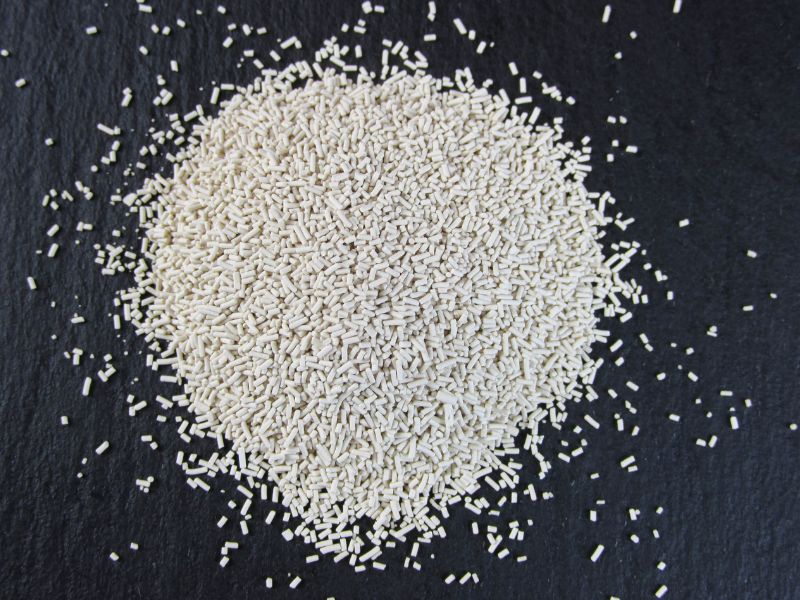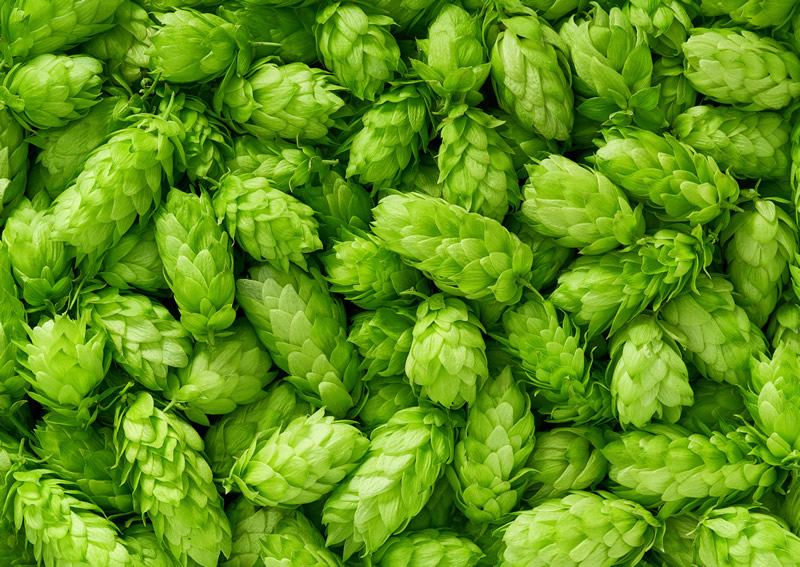Let’s Talk About Yeast
Yeast, this tiny organism, might be minuscule, but its role in homebrewing is anything but. This magical microbe is responsible for turning sugary wort into delicious beer. But not all yeasts are created equal. To truly understand the impact of yeast on your brew, it’s essential to delve into the diverse world of ale and lager yeast strains.
Understanding the Magic of Yeast
Consider yeast as the lifeblood of your brew. As a homebrewer, it’s essential to have a sound understanding of yeast’s role. It’s not just about converting sugars into alcohol and carbon dioxide, which leads to beer’s intoxicating effect and effervescence, respectively. The yeast strain you choose can dramatically impact your beer’s flavor, aroma, and overall character.
Take for example a homebrewing experiment I conducted last summer. I brewed the same recipe twice, with the only difference being the yeast strain. The first batch used an ale yeast strain, known for its fruity and spicy characteristics. The second batch had a lager yeast strain, famous for its clean and crisp profile. The result was two significantly different-tasting beers, despite the recipe being identical. This demonstrates the profound influence yeast has on the end product.
The Tale of Two Yeasts – Ale and Lager
To delve into the differences between ale and lager yeasts, we must start with their scientific names. Ale yeast, or Saccharomyces cerevisiae, thrives at warmer fermentation temperatures ranging from 59-75 Fahrenheit (15-24 degrees Celsius). It’s a top-fermenting yeast, meaning it works its magic at the top of your fermenting vessel.
Lager yeast, or Saccharomyces pastorianus, prefers a cooler environment, operating best at temperatures between 46-55 Fahrenheit (7-13 degrees Celsius). It’s a bottom-fermenting yeast, conducting its business at the bottom of the fermenter.
Ale Yeast: The Fruity Performer
Ale yeast is a star performer in warmer temperatures, creating a range of flavors often described as fruity and spicy. This yeast strain works fast, fermenting in a few days and bringing a robust personality to your beer. From the beautifully banana-flavored German weissbier to the spicy Belgian ales, ale yeast is a versatile player in the brewing process.
Imagine hosting a gathering on a balmy summer evening. As your guests arrive, you serve them a homemade, vibrant, and fruity pale ale, made possible by the magical ale yeast. The conversation flows, and your guests appreciate the unique and flavorful brew that you’ve created, making it a memorable night.
Lager Yeast – The Clean Operator
In contrast, lager yeast is the slow and steady worker of the yeast world. Fermenting at cooler temperatures, it takes its time to convert sugars into alcohol and CO2. But patience is a virtue that pays off. This yeast strain provides a clean, crisp flavor profile, allowing the malt and hops to truly shine through.
Think back to a crisp autumn afternoon, spent with friends around a fire pit. You serve your homemade lager, its smooth and clean flavors accentuated by the chill in the air. Your friends savor the subtle complexity of your brew, the lager yeast having let the ingredients speak for themselves.
Choosing the Right Yeast Strain
When brewing at home, your choice of yeast strain will depend on your desired flavor profile and the brewing conditions. Ale yeasts are great for quick fermentation and pronounced flavors, while lager yeasts excel at providing clean, subtle brews. The homebrewing journey often becomes an exploration of yeast strains, each brew is an opportunity to experiment and discover your preferred taste.
Beer Styles and Yeast Selection – An Essential Connection
When talking about beer styles, one cannot overlook the pivotal role yeast plays. From the robust, malty notes in a stout to the crisp, refreshing nature of a pilsner, yeast is the silent protagonist that brings these beers to life. The beauty of homebrewing lies in the power you hold as a brewer to select your yeast, allowing you to create beers that are truly unique and catered to your preference.
For instance, one autumn afternoon, I decided to brew a traditional English Bitter. The ale yeast I chose for this batch, a strain known for producing fruity esters and mild spicy notes, played a crucial part in delivering the classic characteristics of this beer style. The result was a brew that was full of character, with a nuanced interplay of malt, hop bitterness, and yeast-derived flavors, taking me on a nostalgic trip to the cozy pubs of England.
Ale Yeast – Breathing Life into Traditional Ales
Ale yeast is the driving force behind a wide array of beloved beer styles. Want to brew a Belgian Witbier with its characteristic citrusy, spicy notes? An ale yeast strain like Wyeast 3944 (Belgian Witbier) can bring those flavors to life. Planning to brew a full-bodied Imperial Stout with rich, complex flavors? A high-alcohol tolerant ale yeast, like White Labs WLP099 (Super High Gravity Ale), is up to the task.
Lager Yeast – Crafting Crisp Lagers and Pilsners
On the other hand, lager yeast’s clean and crisp profile is perfect for brewing beer styles where malt and hop flavors need to be at the forefront. Imagine a sunny spring afternoon, you’re in your backyard with a pint of homebrewed Bohemian Pilsner. This beer’s delicate balance of crisp malt flavors and spicy hop bitterness, accentuated by the clean profile of a lager yeast like Wyeast 2124, is a testament to the importance of yeast selection in defining beer styles.
The symbiotic relationship between beer styles and yeast selection is a rewarding aspect of homebrewing. By understanding the role yeast plays, we can better appreciate the vast spectrum of flavors and aromas in our brews, enhancing our homebrewing journey.
Here’s a short list of some brew styles to give you more of an idea of yeast strain usage:
| Yeast Strain | Type of Yeast | Commonly Used Beer Styles | Optimum Fermentation Temperature |
|---|---|---|---|
| Wyeast 1056 (American Ale) | Ale Yeast | American Ales, IPA, Stout | 60-72°F (15-22°C) |
| WLP500 (Monastery Ale) | Ale Yeast | Belgian Ales, Trappist Ales | 65-72°F (18-22°C) |
| Wyeast 3944 (Belgian Witbier) | Ale Yeast | Belgian Witbier | 62-75°F (16-24°C) |
| WLP099 (Super High Gravity Ale) | Ale Yeast | Barleywine, Imperial Stout | 65-100°F (18-38°C) |
| Wyeast 2124 (Bohemian Lager) | Lager Yeast | Bohemian Pilsner | 48-58°F (9-14°C) |
| WLP830 (German Lager) | Lager Yeast | German Lagers, Oktoberfest | 50-55°F (10-13°C) |
Please note that these are the optimal ranges provided by the yeast manufacturers. However, fermentation temperature can greatly influence the character of your beer, and minor adjustments outside these ranges can be used to tweak flavors and aromas. Always ensure to keep the temperature stable during fermentation for best results.
There is some wiggle room. The versatility of yeast means that many strains can be used in a variety of styles beyond what’s listed. It ultimately depends on the flavors and characteristics you want to bring out in your homebrew.
The Nuances of Yeast Handling
Equally important to choosing the right yeast strain is knowing how to handle and store it. Each yeast packet comes with a ‘pitch rate’, which is the recommended amount of yeast to use per gallon of wort. Overpitching can lead to overly fruity beers, while underpitching may result in a sluggish fermentation or off-flavors. It’s all about balance.
Storing yeast is another important aspect of yeast handling. Generally, the yeast should be stored in a cool environment, like a refrigerator, and used by its expiration date for the best results.
It’s also a great idea to have a yeast starter, which is a simple concoction of water, malt extract, and yeast that boosts your yeast’s health and cell count before pitching it into the wort. Think of a yeast starter as a pre-game pep talk, preparing your yeast to perform its best.

An Exploration of Yeast Strains
While we’ve broadly discussed ale and lager yeast strains, it’s important to note that within these two categories, there’s a vast array of sub-strains, each with unique flavor profiles and characteristics. Exploring these diverse strains is part of the joy of homebrewing. It’s a bit like being a kid in a candy store, except the candy is yeast, and the store is your local homebrew supply shop.
Let’s consider a few examples. Within the ale yeast family, you have strains like Wyeast 1056 (American Ale), famous for its versatility and clean profile. Then there’s WLP500 (Monastery Ale), a strain that imparts a delightful mix of fruity and spicy flavors, ideal for brewing Belgian-style ales.
Within the lager yeast family, options include Wyeast 2124 (Bohemian Lager), a strain that yields a rich, malty flavor perfect for Bohemian-style lagers. Another choice is WLP830 (German Lager), renowned for its clean and well-balanced profile.
Each yeast strain offers a different journey for your homebrew, providing a world of possibilities for the adventurous brewer.
The Science Behind the Magic
Underpinning the art of homebrewing is the science of yeast. Yeast fermentation involves a complex series of reactions that ultimately convert the sugars in your wort into alcohol, carbon dioxide, and flavor compounds. To understand how yeast works its magic, it’s beneficial to learn a bit about the biochemistry involved.
Imagine the yeast as a group of hungry diners. The sugar in your wort is like a delicious feast that the yeast consumes. As they feast on the sugars, they produce alcohol and carbon dioxide. This process, known as alcoholic fermentation, is the essential reaction that turns wort into beer.
But there’s more. The yeast doesn’t just produce alcohol and CO2. It also produces a multitude of flavor compounds during fermentation. These compounds contribute to the complex flavor and aroma profiles of beer, making each brew unique.
Embracing Yeast Diversity
Embracing the diversity of yeast strains can elevate your homebrewing journey to new heights. Each strain has its personality, its characteristics, and its quirks. Understanding and experimenting with these strains is a rewarding pursuit, as it allows you to unlock new flavors, aromas, and styles of beer.
For me, every brew day is a new adventure, a fresh opportunity to experiment with different yeast strains. From the fruity complexity of an ale yeast to the subtle, clean profile of a lager yeast, each strain offers something unique, adding depth and dimension to my brewing portfolio.
So next time you’re planning a homebrew, give some thought to your yeast. Consider the characteristics you want in your beer and choose a yeast strain that complements those flavors. Embrace the adventure, and enjoy the journey.
The Marvelous World of Yeast
To wrap up our exploration into the world of yeast, it’s evident that these tiny organisms wield significant power in the realm of homebrewing. Whether it’s the robust character of ale yeast or the subtlety of lager yeast, your yeast selection will have a profound impact on the end product. By taking the time to understand yeast’s intricate role and how it interplays with the other brewing ingredients, you gain the ability to fine-tune your homebrews and create beers that are a reflection of your tastes.
As you continue your journey into homebrewing, embrace the adventure of yeast exploration. With each brew, take the opportunity to experiment with different yeast strains, delve into their unique characteristics, and experience the diverse flavors and aromas they can impart. The world of yeast is a world of possibilities, waiting for you to discover its magic.
In the world of homebrewing, yeast isn’t just an ingredient—it’s an invitation to creativity, an exploration of flavor, and, above all, a celebration of the incredible art of brewing.
© 2011-2023 by Brew.info. All rights reserved. No part of this document may be reproduced or transmitted in any form or by any means, electronic, mechanical, photocopying, recording, or otherwise, without prior written permission of Brew.info.







